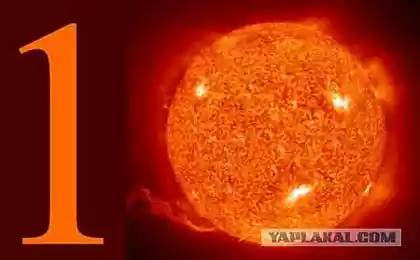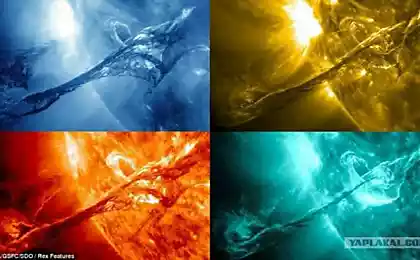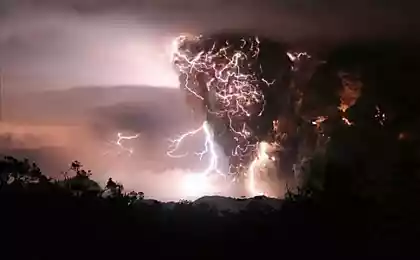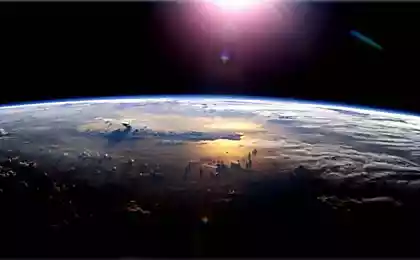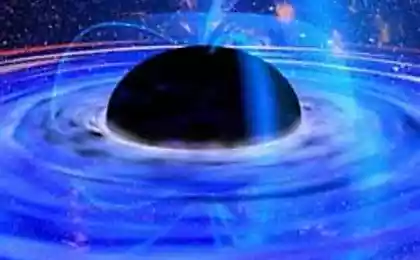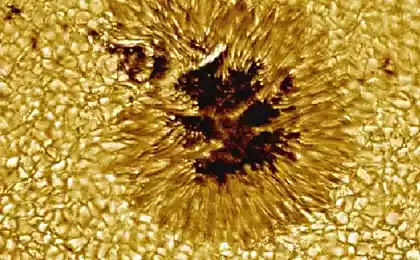562
Awesome pictures of the Sun
The launch of the observatory of the dynamics of the Sun (SDO) took place on 11 February 2010. Her observations of the Sun will last for the next five years, and scientists expect to be informed about how the Sun affects the climate and chemical processes occurring on Earth. Let's look at the photos taken with the equipment on board the spacecraft Observatory.
9 photos via pnikonov
1. Passage in the shadow of the moon.
The dark object is between the Sun and the lens of equipment on board the spacecraft - the dynamics of the Sun Observatory (SDO), owned - is the moon. Thus, in the photo - a partial eclipse.

2. Ring of Fire.
Huge gas cloud in the form of a loop over the surface of the sun. Solar prominence, namely the so-called phenomenon can be pulled out for thousands of kilometers into space, above the surface of the sun for several months. The length of the largest known prominences observed in 2010 amounted to 692 000 kilometers. This is approximately equal to the radius of the sun.

3. Sunspots.
Dark spots are due to the advent of intense magnetic activity, which creates areas with low surface temperature. Sunspots can expand and merge with each other - they migrate to the surface of the sun at speeds of hundreds of kilometers per second. They can reach 80,000 km in diameter, and the Earth can be seen with the naked eye.
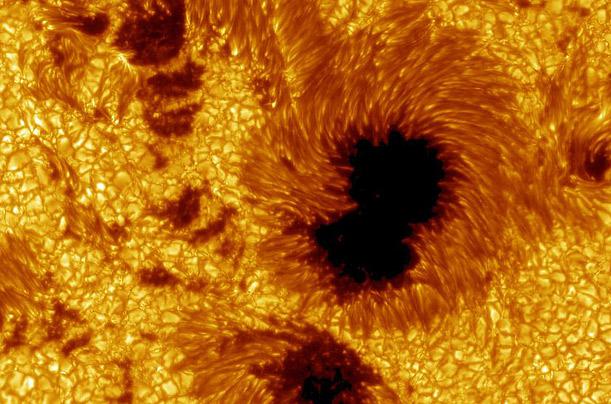
4. Sunrise.
Sunrise over the Earth.
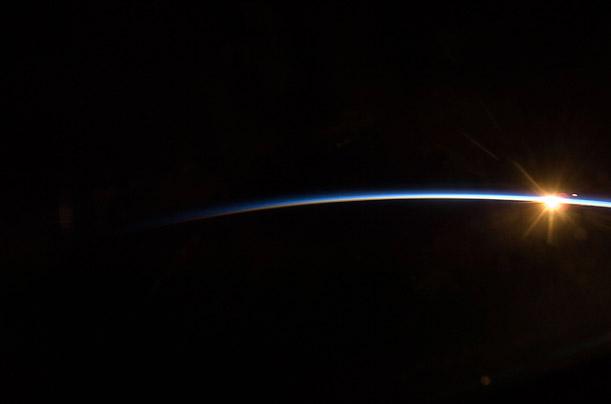
5.Siluet
The space shuttle "Atlantis" flies past the Sun during its 30th flight. This photo was taken at Kennedy Space Center with the help of the Hubble Space Telescope.
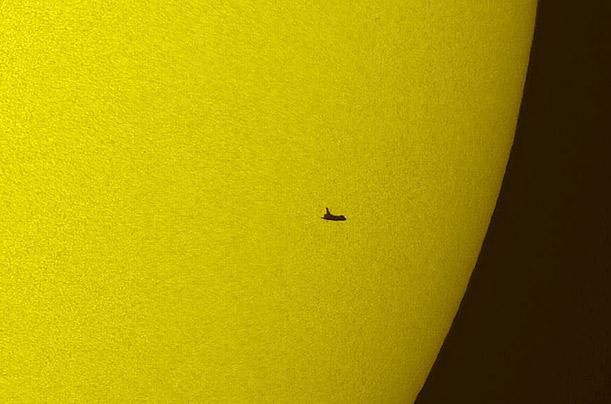
6.Siyayuschaya star
Former NASA astronaut Joseph Tanner in the shuttle "Discovery" low above the Earth's orbit during the second expedition of the Hubble Space Telescope. Behind him water sun. Low orbit over the sky always seems dark, because the atmosphere is not sufficient for the diffusion of sunlight.

7.Plazmennye loop
Originating in the photosphere, the coronary loop reach 96,000 kilometers, and can be observed between the bottom of the solar corona and transition layer of the sun. Drifting along the magnetic field, the arc start to pull away as the temperature increases plasma and fall at a speed of about 90 km / h when the temperature starts to drop. Scientists have recently suggested that the solar corona is heated to a temperature that is 300 times higher than the temperature of the surface of the sun.
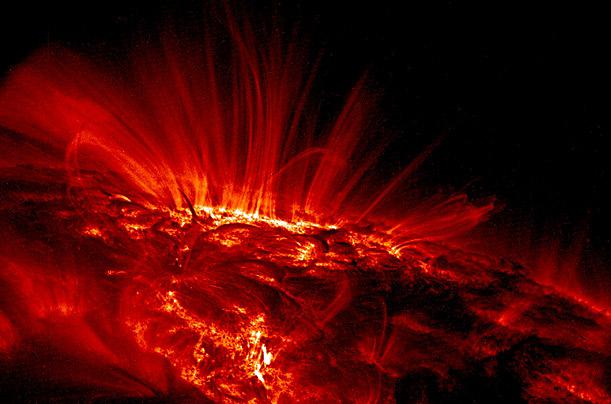
8. jet stream
Similar to the needle spikes rise from the inner surface of the sun chromosphere jet with a velocity greater than 48 000 km / h. Above the surface can be up to 60,000 of these "needles." Their duration of up to 5 minutes.

9. The view from the 360-degree
Based on the high-resolution data, which are the result of research observatory STEREO agency NASA, this picture shows the two halves of the Sun, taken from two opposite sides of it. This photo is part of NASA's comprehensive study of solar activity.
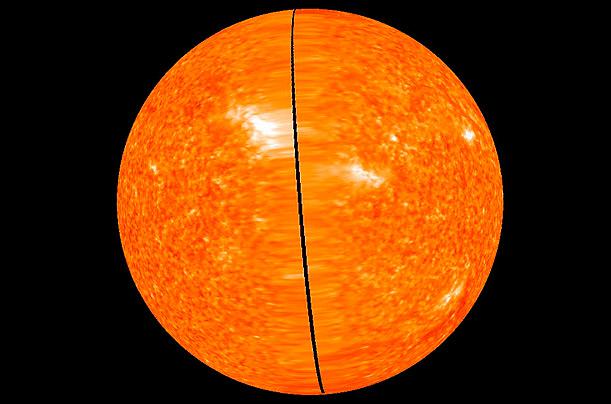
Source:
9 photos via pnikonov
1. Passage in the shadow of the moon.
The dark object is between the Sun and the lens of equipment on board the spacecraft - the dynamics of the Sun Observatory (SDO), owned - is the moon. Thus, in the photo - a partial eclipse.

2. Ring of Fire.
Huge gas cloud in the form of a loop over the surface of the sun. Solar prominence, namely the so-called phenomenon can be pulled out for thousands of kilometers into space, above the surface of the sun for several months. The length of the largest known prominences observed in 2010 amounted to 692 000 kilometers. This is approximately equal to the radius of the sun.

3. Sunspots.
Dark spots are due to the advent of intense magnetic activity, which creates areas with low surface temperature. Sunspots can expand and merge with each other - they migrate to the surface of the sun at speeds of hundreds of kilometers per second. They can reach 80,000 km in diameter, and the Earth can be seen with the naked eye.

4. Sunrise.
Sunrise over the Earth.

5.Siluet
The space shuttle "Atlantis" flies past the Sun during its 30th flight. This photo was taken at Kennedy Space Center with the help of the Hubble Space Telescope.

6.Siyayuschaya star
Former NASA astronaut Joseph Tanner in the shuttle "Discovery" low above the Earth's orbit during the second expedition of the Hubble Space Telescope. Behind him water sun. Low orbit over the sky always seems dark, because the atmosphere is not sufficient for the diffusion of sunlight.

7.Plazmennye loop
Originating in the photosphere, the coronary loop reach 96,000 kilometers, and can be observed between the bottom of the solar corona and transition layer of the sun. Drifting along the magnetic field, the arc start to pull away as the temperature increases plasma and fall at a speed of about 90 km / h when the temperature starts to drop. Scientists have recently suggested that the solar corona is heated to a temperature that is 300 times higher than the temperature of the surface of the sun.

8. jet stream
Similar to the needle spikes rise from the inner surface of the sun chromosphere jet with a velocity greater than 48 000 km / h. Above the surface can be up to 60,000 of these "needles." Their duration of up to 5 minutes.

9. The view from the 360-degree
Based on the high-resolution data, which are the result of research observatory STEREO agency NASA, this picture shows the two halves of the Sun, taken from two opposite sides of it. This photo is part of NASA's comprehensive study of solar activity.

Source:



